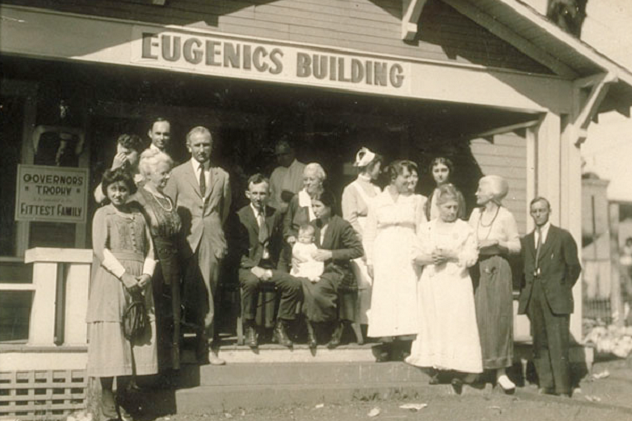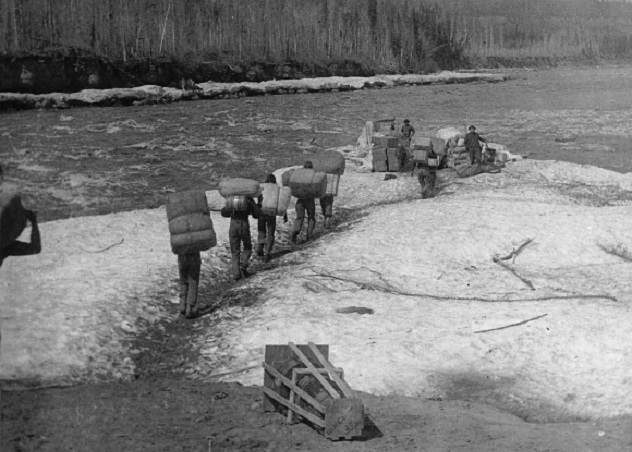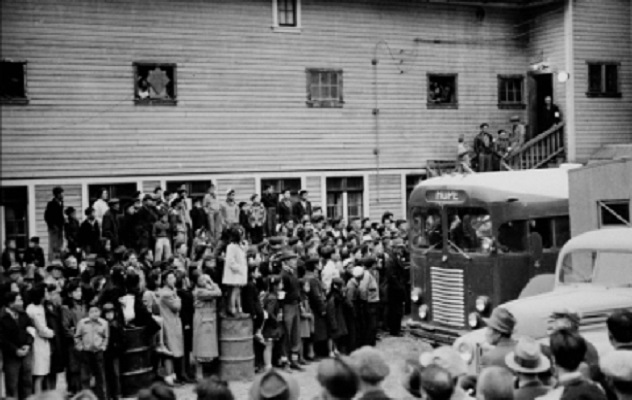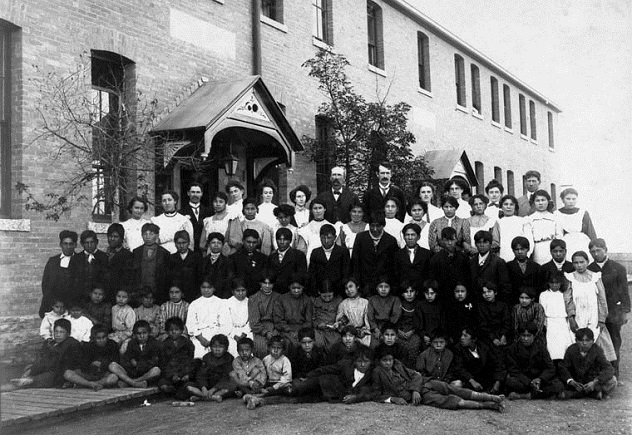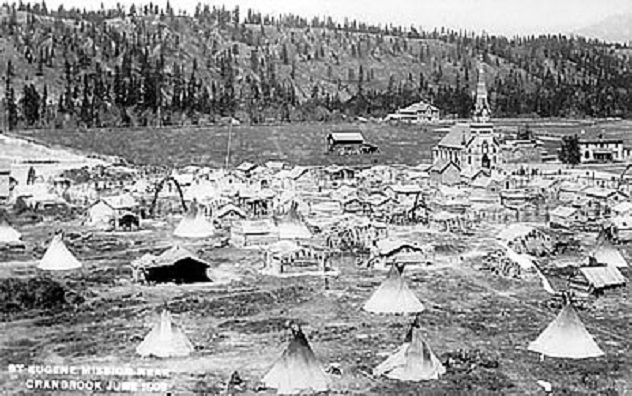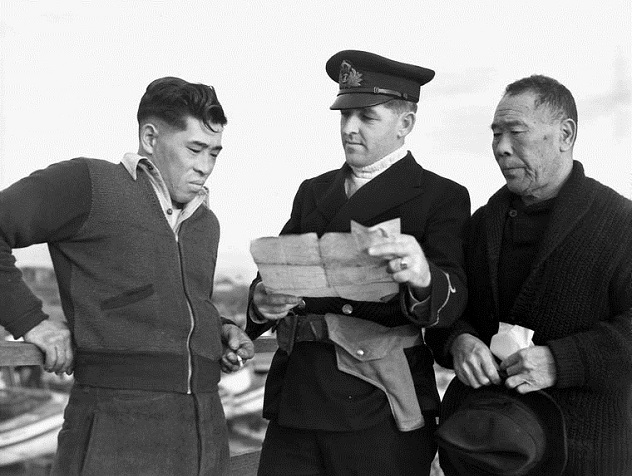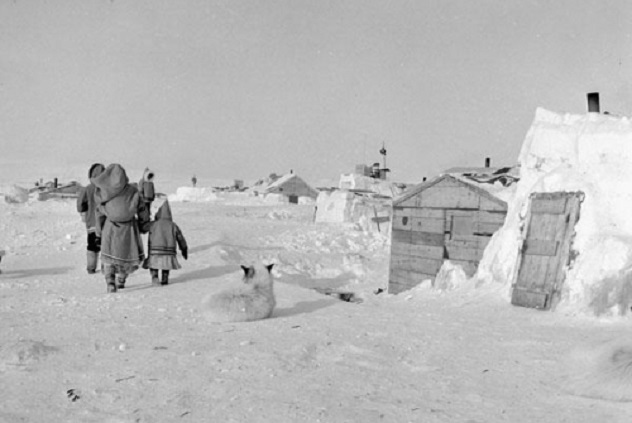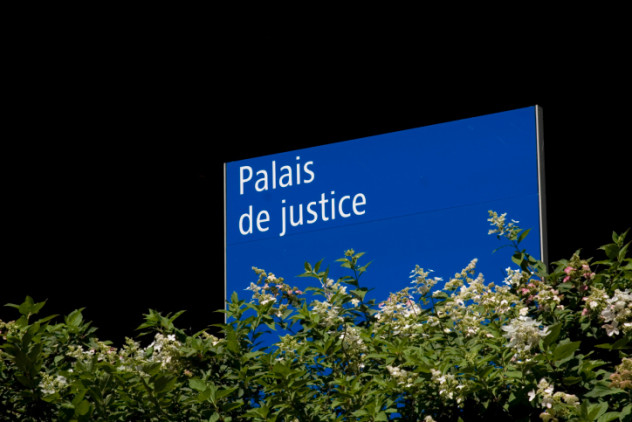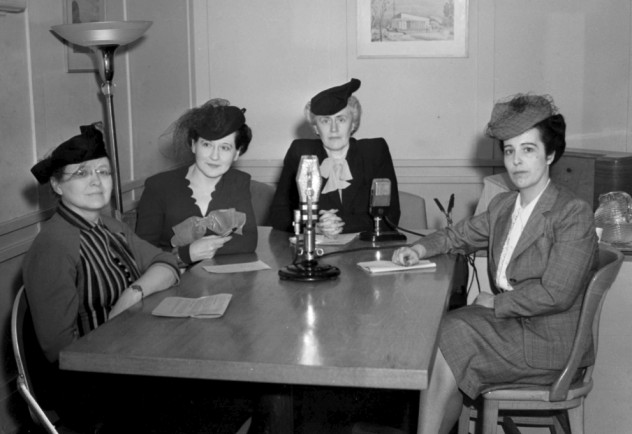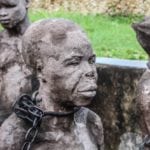10Eugenics
Eugenics, a branch of science concerned with the genetic improvement of the human race, was very popular during the 19th and 20th centuries. In Canada, this science was put into practice in an utterly horrifying way in the province of Alberta. In 1928, the Alberta government passed the Sexual Sterilization Act, which created a eugenics board to force those soon to be released from mental hospitals to be sterilized against their will as a condition of their release. An amendment to the act in 1937 permitted the sterilization of “mental defectives” without their consent. Unbelievably, the program and the board lasted until 1972. During that time, they recommended sterilization in 99 percent of the 4,795 cases they oversaw, which were overwhelmingly women and Aboriginal people. It was only under Premier Peter Lougheed that the act was finally repealed and the board disbanded. David King, one of the politicians who introduced the bill to kill the act, said at its reading “I come finally to the last [reason] which, for me personally, is the most compelling. That is, simply, that the act violates fundamental human rights. We are provided with an act, the basis of which is a presumption that society, or at least the government, knows what kind of people can be allowed children and what kinds of people cannot . . . It is our view that this is a reprehensible and intolerable philosophy and program for this province and this government.” Leilani Muir, one of the victims of the practice, sued the government of Alberta in 1995 and was awarded $1 million Canadian in damages. This led to a flood of lawsuits against the government over the next few years, which raised public awareness of the horrible program. Due to the sheer volume of lawsuits, the Alberta government tried to impose a limit on the amount that could be claimed by victims of the eugenics board of $150,000 Canadian. Public outcry killed this law within 24 hours, and eventually, the government settled for a lump sum of $80 million Canadian to be paid out to the victims.
9Slavery In Canada
Like America, Canada was built in part by slave labor, centered mainly in New France, which is now known as the province of Quebec. Thousands of African and Aboriginal people were sold into bondage, either bought from traders overseas, traded between the French and the British, or even sold by Aboriginal people themselves, who had little other use for those captured in wars between various tribes. Between 1671 and 1833, around 4,000 slaves were held captive in Canada, two-thirds of whom were First Nations people and the rest mainly African. Most of those held in captivity were very young, between the ages of 14 and 18 years old. All were forced to serve the political and social elite of the times, and although their treatment was much better than that endured by American slaves, they still enjoyed little freedom and endured the pain of being separated from their families and culture. The main reason the slave trade in Canada did not balloon to the proportions seen in the United States was the principle differences in industry between the two nations at the time. Canada’s main source of income was the fur trade, an industry served primarily by hunters, and Canada’s farming industry was not focused on exportation, unlike the massive cotton industry in the US. Slaves were also very expensive during this period—even an unskilled slave cost as much as four times an average person’s annual income. That said, the abhorrent practice did exist in Canada and affected thousands, leaving an often unmentioned scar on the nation’s psyche.
8Concentration Camps During World War I
In times of war, the paranoia of a ruling government can be almost boundless. During World War I, Canada’s leaders fell to this mentality and imprisoned thousands of “enemy aliens” in concentration camps dotting the country. Most of those who were rounded up were of Eastern European origin, mostly Ukrainians, though the Poles, Italians, Russians, Turks, Jews, Austrians, Romanians, and many others were subjected to the camps as well. Around 8,000 people suffered brutality and hardship under Canadian law. Those who fell under the suspicious eye of the government at the time had all of their valuables confiscated and were sent to the most distant parts of the country to be held as prisoners and used for forced labor. They were even forced to build the very camps in which they were to be imprisoned. Afterward, they were used for labor—building railroads, clear-cutting forests, or mining—and afforded very little in the way of food or rest. Escape attempts, riots, and suicides plagued the camps due to conditions which were almost unendurable. Despite this, many Ukrainians remained loyal to Canada during the war and even enlisted to fight overseas. Of course, they had to lie about their heritage to the government for the chance to fight, going so far as to enlist under false names, although any who were discovered fighting under false identities were expelled from the army and sent to the camps. Even after the war ended, hundreds more prisoners remained in the camps due to the political atmosphere that gripped the nation as a result of one of history’s most brutal conflicts. To this day, the Canadian government has made little effort to recognize or atone for the unfair practice it instituted during and after the war.
7The Chinese Head Tax
Between 1881 and 1885, the Canadian Pacific Railway was constructed mostly using the labor of around 15,000 Chinese immigrants who flooded into the country to hasten its construction because of the gold rush of the time. The work was hard and dangerous, and many of those immigrants who worked on the lines would not survive to see their completion. However, what the Canadian government instituted after the completion of the railway added insult to injury. Worried about the flood of Chinese immigrants, the government called for a “head tax” on each one who wished to come to Canada. At first, the tax was $50 Canadian in 1885, but it increased to $100 in 1900, and then $500 in 1903, which was equal to two years’ wages in China. The Chinese were the only people who were targeted this way. Despite this, many still came to Canada, leading the government to ban immigration from China entirely starting in 1923. The act was finally repealed in 1947, at which time the Chinese were afforded the same rights as any other group of people who wished to enter the country. The effects of this racist policy on the Chinese-Canadian community were grave. Many men already in Canada became unable to send for their families, leaving many fatherless households in China to fend for themselves. Some of these families never reunited, and some of those left stranded in China died with no breadwinner to support them. To this day, the Chinese community in Canada refers to Canada Day on July 1 as “Humiliation Day,” since it was on this day in 1923 that the act barring them from the country was written into law.
6Residential Schools
Throughout the 19th century, many Aboriginal children were taken from their families and forced to attend and live in what were known as “residential schools” to educate them in Western culture, teach them English, and convert them to Christianity. The total number of children forced into these schools was around 150,000. The experiences of the children in these schools were harrowing, as physical, emotional, and even sexual abuse was commonplace. Children were expressly forbidden to speak in their native languages and received beatings and other punishments for even minor infractions. They were often taught from textbooks in English, which most had difficulty reading, if they could read them at all. Nourishment was scarce as well, and some schools even deliberately withheld food in order to perform “nutritional experiments” on the students. Most students endured 10 months of school each year, and many were never allowed to return home at all during their “education.” When these poor children were finally returned to their families, they were often branded as outsiders, having been so removed from their own culture that they became foreign to their own families. Although most of these schools were shut down during the 20th century, the last one remained open until 1996. In 2007, the Canadian government issued a formal apology to the First Nations people and enacted a $1.9 billion Canadian compensation package fund for victims of the program. As of 2013, $1.6 billion has been paid out to 105,548 families.
5The Genocide Of The Aboriginal Peoples
Canada’s first prime minister, John A. MacDonald, is a historical figure akin to the founding fathers of the United States. He has had many monuments erected in his honor and even adorns the Canadian $10 bill. However, many don’t know that he instigated a campaign of forced starvation against the Aboriginal peoples of Canada during his term as the head of the newly founded nation. Under his tenure, he oversaw a government policy to withhold food from Aboriginal peoples until they moved to dictated reservations. Even after they complied, their food supply was stored in ration houses and still denied to them, left to rot as the people starved. The man himself was known as a virulent racist and alcoholic, yet his views on Aboriginals were as complicated as the politics of the times. Paradoxically, he also enacted legislation to extend the vote to First Nations people under his reign as the country’s leader. To many Canadians, he is a hero and a shining example of good governance. To the many Aboriginals who have inherited the tales of misery he was responsible for from their elders, he is simply a monster. Recently, pressure from many First Nations leaders within Canada has caught the eye of the United Nations, who have sent an envoy to examine the historical treatment of their people in Canada.
4Detainment Of The Japanese During World War II
In a case of history repeating itself, many Japanese Canadians were imprisoned in “protective areas” that were nothing less than prisons during World War II. This move was made under the administration of Prime Minister Mackenzie King, who enacted the War Measures Act in 1942, by which time the Battle of Midway had essentially removed the Japanese threat to Canada anyway. Around 22,000 innocent Japanese Canadians, most of whom were men, were torn from their families and forced into a life of hard labor, near starvation, and humiliation merely for the crime of being Japanese. Many of the camps, which were located mainly in the British Columbia interior, had no electricity or running water, and conditions were crowded and unsanitary. The men were separated from the few women and children imprisoned along with them and forced to work on sugar beet farms or build roads and railways. When the war ended, the suffering of those in the camps did not, as they were given an ultimatum by the government: either leave British Columbia and relocate somewhere else in Canada or leave the country altogether. About 4,000 of those released chose to leave the country, and none of the former prisoners were allowed back into the province until 1949. In 1998, the Canadian government finally recognized its wrongdoing toward the Japanese people within its borders and issued a formal apology. A sum of $21,000 Canadian was offered to each former prisoner of the camps as well as a $12 million “community fund” and a one-time donation of another $12 million to the Canadian Race Relations Foundation. To this day, many in the Japanese community understandingly feel that this gesture was not sufficient to compensate for their pain.
3Inuit Relocation
In the 1950s, the Canadian government forcibly relocated three small communities of Inuit people 1,200 kilometers (745 mi) from their native communities in northern Quebec to the cold and nearly inhospitable climates of the high Arctic. A total of 87 people were torn from their homes in two separate incidents in 1953 and 1956. The people were told that if they did not like the living conditions in their new “home,” they would be allowed to return to their native land within two years. After enduring temperatures 20 degrees colder than they were used to and limited food and living resources due to poor government planning, they expressed their wish to return only to find that the government had broken its promise. Insisting that they were trying to help the people they betrayed, the government told them that the move was necessary due to poor hunting and living conditions in Quebec, which wasn’t much comfort to the people who were relocated. Many suspected that the government’s true motive was to claim sovereignty over the high Arctic by moving some of its own citizens there against their will. Despite the hardships they were forced to endure, the two new communities, known as Resolute and Grise Fiord, did manage to survive and even flourish. Today, the two populations stand at 229 and 141, respectively, and the people have adjusted to their new way of life. It wasn’t until 1996 that the government formally apologized for its act and offered the people in the two remote villages $10 million Canadian to help rebuild their lives and heal their wounds. Most of those who relocated remain within their new communities, as do their descendants. Two stone monuments were erected within each village to recognize the travesty its residents were forced to endure.
2Language Laws In Quebec
Perhaps nowhere else in the world is the issue of a spoken language more heated than in the province of Quebec. The territory was settled by the French and absorbed into Canada under the British, and until recently, the French were marginalized under English rule. However, as time passed, a series of language laws were passed within Quebec that would turn the tide in favor of the French. The real battle of words and laws began in 1969, when Bill 63 was introduced in Quebec. The bill required all children in the educational system and those who immigrated to the province to learn French. Bill 22 reared its head in 1974, which declared French the official language of Quebec and required all immigrants to be taught only in exclusively French-speaking schools. This led to Bill 101 in 1977, which made French the official language of the government and courts in the province. Even immigrants from other Canadian provinces were now required to enroll in French schools. By this time, the Anglophone population decided to fight back and challenged many of the bills, winning a few minor victories. The long fight ended with the official recognition of bilingualism in Quebec. Schools were permitted to teach English as a second language and businesses to advertise in both French and English, provided the French letters were twice as big as the English and the advertisements appeared only on the outside of buildings. Things heated up again in 1995, when a referendum on Quebec separation from Canada was held and struck down by a mere 1-percent margin. The latest move in this seemingly neverending battle was made when the ruling Parti Quebecois introduced Bill 14 in 2013. This bill would have extended Bill 101’s laws to all businesses and revoked the bilingual status of any city in Quebec that had an Anglophone population of under 50 percent. This bill proved so unpopular that the Parti Quebecois were voted out of power in 2014, but the battle continues to this day.
1Women’s Suffrage In Quebec
In 1919, women all across Canada won the right to vote, except in Quebec, where they would continue to struggle until 1944. Although the Constitutional Act of 1791 extended the right to any person who held a certain amount of property within Quebec, this provision was withdrawn in 1849. The fight for the vote was spearheaded by Therese Casgrain, who organized various feminist groups who brought no fewer than 13 suffrage bills before the government between 1922 and 1939, all of which were rejected. Over the years, their opponents included not only men but the Catholic church itself and even other women within Quebec. It was only when a new premier, Adelard Godbout of the Liberal Party, was voted into power that a new bill was introduced in 1940. Although Godbout supported the suffrage movement, it still took four more years of dirty politics and wrangling to finally get the bill passed into law. In 1944, women turned out to vote for the first time in the general election that was held that year. Though they had gained a huge victory, none would enter politics as a legislator until 1961. Casgrain earned this honor herself when she was appointed to the senate in 1970. She passed away 11 years later, having led a life of true courage and determination. Damien B. is a part-time writer and basketball lover who is interested in history, politics, crime, and of course, basketball.
